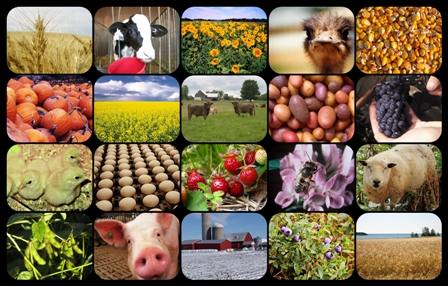Canadian Agriculture at a Glance
Archived Content
Information identified as archived is provided for reference, research or recordkeeping purposes. It is not subject to the Government of Canada Web Standards and has not been altered or updated since it was archived. Please "contact us" to request a format other than those available.

This edition of Canadian Agriculture at a Glance aims to open the barn doors of Canadian agriculture to farming and non-farming Canadians by providing an informative and unbiased look at the state of agriculture in the country.
The 2011 Census of Agriculture—the basis for the articles—found fewer than 1% of Canadians are farm operators. Yet, all Canadians participate in the agri-food sector when they go grocery shopping and make food choices.
Statistics Canada’s mandate is to provide information to all Canadians so they can make sound, fact-based decisions—whether on the farm or in the grocery aisle. Its wealth of objective data on the agriculture sector can help you make your own choices.
Overview of livestock farm operating expenses
October 2014
By Jean-Mathieu Lachapelle, Agriculture Division
An overview of operating expenses of Canadian livestock farms. The expenditures vary depending on the province, production method and industry type. The summary analysis makes it possible to compare the movement of expenditures for each dollar spent.
Pulses in Canada
August 2014
By Ellen Bekkering, Agriculture Division
A pulse is an edible seed harvested from the pod of a variety of annual leguminous plants. Pulses grown in Canada include, mainly, dry beans, dry peas, lentils and chickpeas. According to the 2011 Census of Agriculture, pulses represented approximately 6% of field crop area in Canada in 2011, while wheat and canola accounted for almost 50%. Pulse area and production in Canada has increased since the 1980s, making the country one of the leading producers and exporters of pulses worldwide.
The changing face of the Canadian hog industry
July 2014
By Yan Brisson, Agriculture Division
The Canadian hog industry has changed greatly over the years. Data collected by the Census of Agriculture show that the industry has undergone a radical transformation. It has evolved from being an industry with a very large number of mixed farms, each possessing only a few pigs, to one with fewer large and highly specialized farms. It now plays a major role in exports and is constantly improving in terms of technology.
Feeding the soil puts food on your plate
May 2014
By Erik Dorff and Martin S. Beaulieu
As crops grow, they deplete the soil's fertility by absorbing nutrients from the land. These nutrients, then, need to be replenished in order to ensure that there is something in the soil for the next year's crops. Canadian agriculture relies heavily on commercial fertilizers as well as manure to replenish soil's nutrients. This article examines how farmers provide their crops with the nutrients they need to grow and how these farming practices have changed over time.
The changing face of the Canadian fruit and vegetable sector: 1941 to 2011
April 2014
By Erik Dorff, Statistics Canada
The 2011 Census of agriculture revealed a number of shifts in the Horticulture sector. Growth in the domestic greenhouse industry and an increase in imports have offered a greater range of food choices in recent decades. Changes in farming practices, such as increasing reliance on mechanization, have also played a role in shaping the mix of commodities grown on Canadian farms in 2011.
This article compares 2011 Census data on horticulture to the figures reported on the 1941 Census. The 1941 Census is noteworthy as it counted the most farms ever reported since agriculture data began to be collected in Canada. This comparison also provides a description of the changes that have occurred in horticulture over the span of seventy years.
Corn: Canada's third most valuable crop
March 2014
Marie-Andrée Hamel and Erik Dorff, Agriculture Division
When it comes to cereal crop production around the world, corn is king. This may come as a surprise to many. Anyone who has ever seen the endless seas of golden wheat on the Canadian Prairies might think that this lynchpin of Canadian agriculture is the number one cereal crop.
The same might be thought of rice and the landscape of paddies stretching as far as the eye can see across Asia. But instead, the most produced cereal crop worldwide is actually corn (also known as maize), a cereal native to the Americas. It outstrips both rice and wheat in terms of global production.
Demographic changes in Canadian Agriculture
February 2014
Martin S. Beaulieu, Agriculture Division
The structure of agriculture has changed significantly over the last two decades with fewer but larger farms. While there were 280,043 farms in 1991, according to the Census of Agriculture, by 2011, that number had gradually declined to 205,730. Since 1991, the average farm area increased from 598 to 778 acres, while the number of farm operators decreased from 390,875 to 293,925, a 24.8% drop. Over the same period, the average age of farm operators increased, rising from 47.5 to 54.0 years.
- Date modified:
